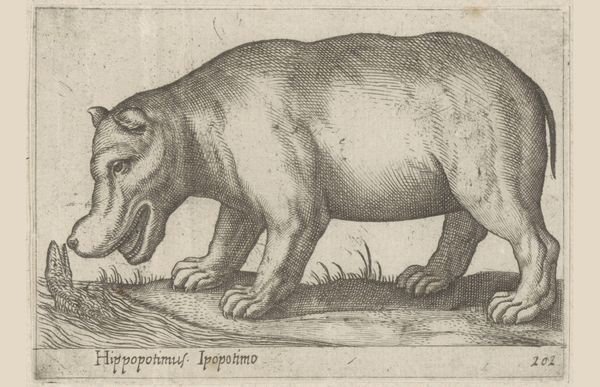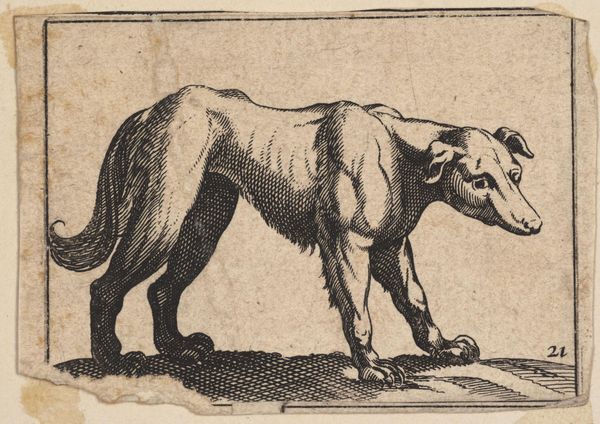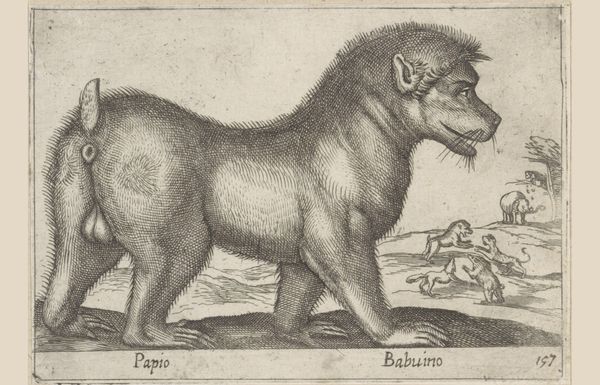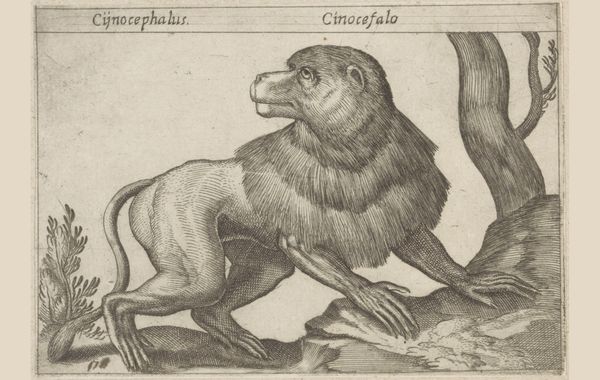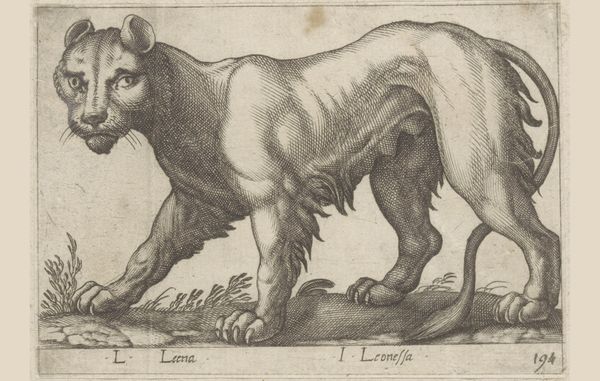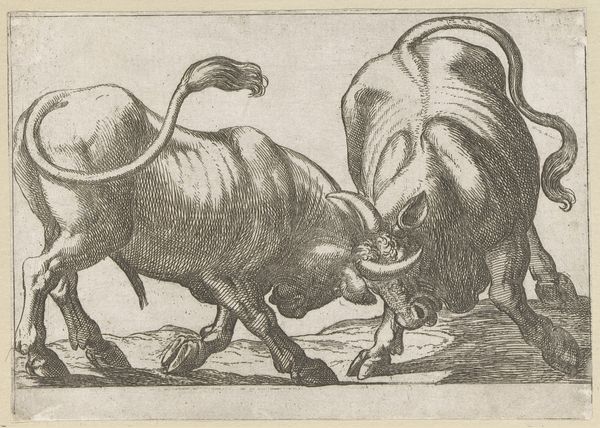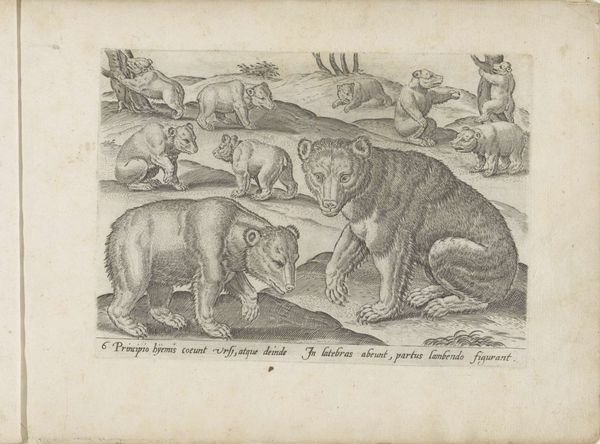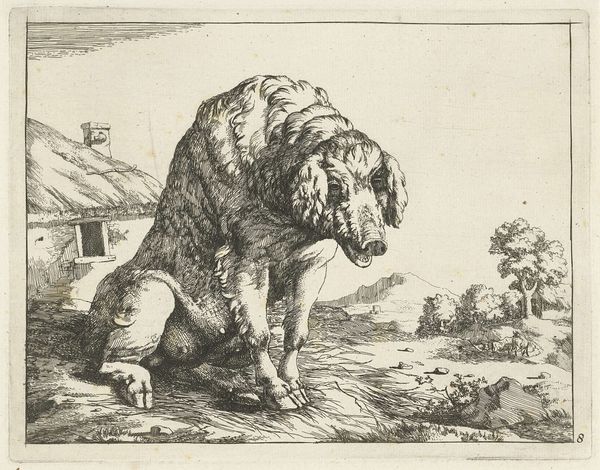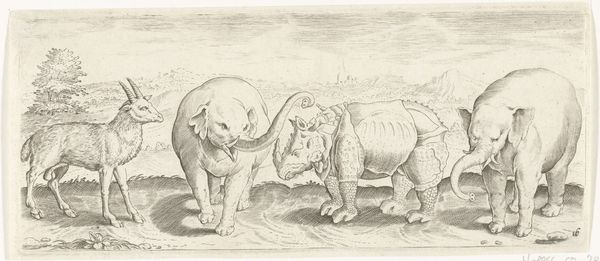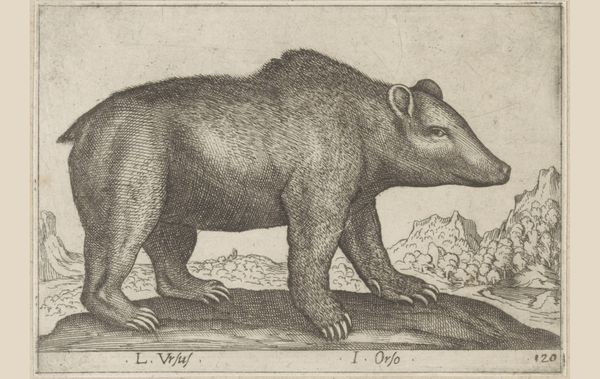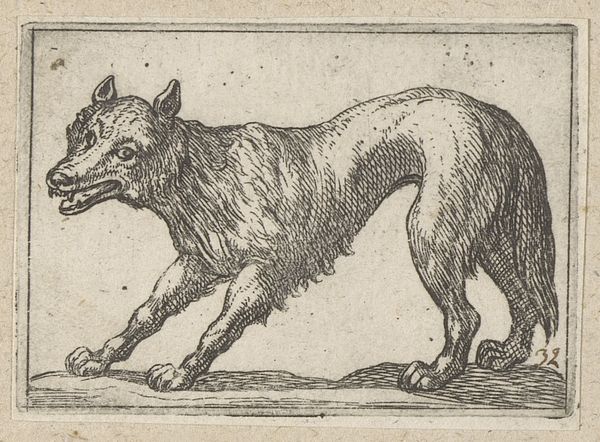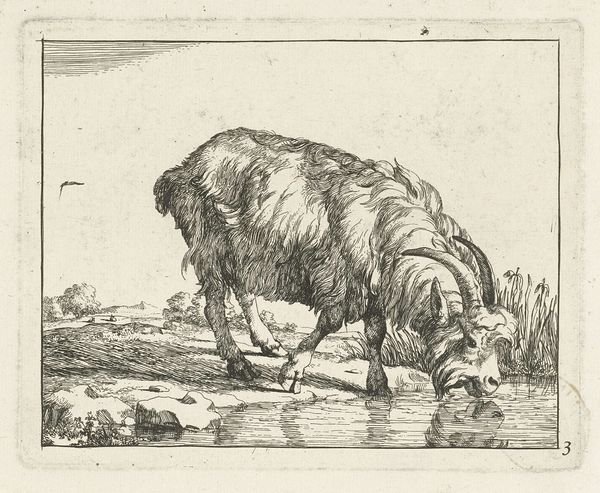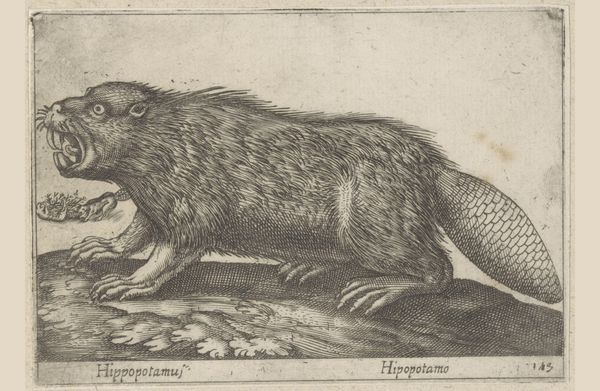
print, engraving
#
animal
# print
#
11_renaissance
#
history-painting
#
engraving
#
realism
Dimensions: height 95 mm, width 137 mm
Copyright: Rijks Museum: Open Domain
Editor: Here we have Antonio Tempesta’s engraving "Neushoorn," made before 1650. I’m struck by the almost clunky way the rhinoceros is rendered. It's powerful, but a little awkward, and the texture created by the engraving process feels very present. What do you see in this piece? Curator: It's crucial to recognize this image as a product of its time, specifically concerning access to, and understanding of, the animal itself. The "clunkiness" you observe speaks directly to the means of production and distribution of knowledge in the pre-modern era. Consider: How many Europeans had actually seen a rhinoceros firsthand? Editor: Probably not many! So they were relying on second-hand accounts or sketches? Curator: Precisely. The artist’s access to reliable source material was limited, impacting the final representation. But more importantly, engravings like these weren't just art objects; they were commodities. They were reproduced and circulated widely, shaping the European understanding, and arguably consumption, of the "exotic." Notice the deliberate detail in the rendering of its hide, each line meticulously etched into the copper plate. Editor: You’re right; the line work gives a real sense of texture and volume. Was this meant for a scientific purpose then, or more entertainment? Curator: The line is deliberately blurred, isn't it? These images were disseminated within a network of scientific curiosity, commerce, and, dare I say, colonial ambition. Consider the labor involved, from the mining of the copper to the meticulous engraving process, to the printing and distribution. Every step reveals the complex social context embedded in the artwork itself. Editor: That's a totally different way to look at it. I hadn't considered the material reality and its relation to the animal itself. Curator: Understanding the artwork as a material object produced through a specific process and within a definite social context gives us deeper insights beyond just its aesthetic qualities. Editor: Absolutely, looking at the layers of production really adds another dimension to how we can interpret this work. Thanks!
Comments
No comments
Be the first to comment and join the conversation on the ultimate creative platform.
